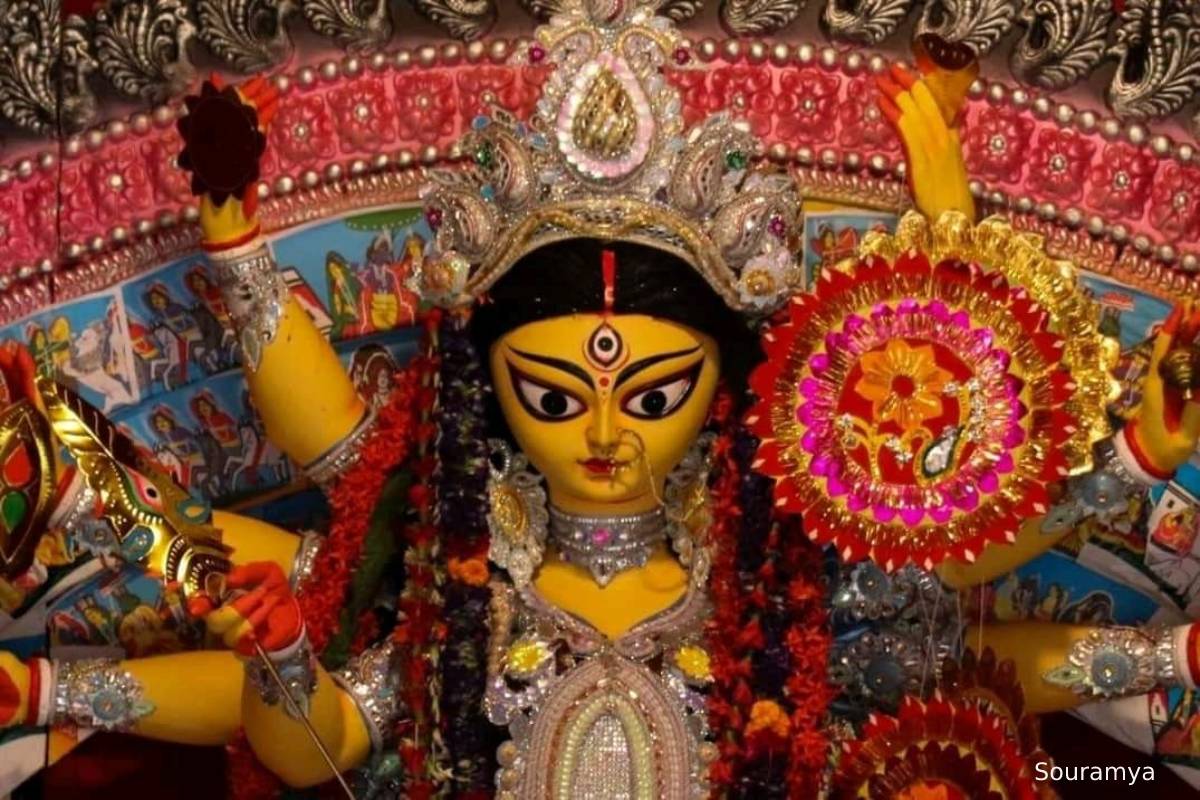TMC, Congress protest in Parliament against ‘delay’ in release of MGNREGA fund to Bengal
TMC and Congress MPs held a protest in Parliament on Tuesday against the Union government for allegedly stoppping MNREGA funds to West Bengal.
Durga Puja has left a prominent mark on the global map.With its inclusion economy that flourishes around the festival will get a huge boost.
Debanjana Banerjee | Kolkata | September 4, 2022 3:11 pm

Durga Puja representation image (Photo:SNS)
“Durga Puja is seen as the best instance of the public performance of religion and art, and as a thriving ground for collaborative artists and designers. During the event, the divides of class, religion and ethnicities collapse as crowds of spectators walk around to admire the installations.”
– UNESCO
Advertisement
India is widely known for its vivid traditions and cultural practices. One popular festival among them is the Durga Puja, which is now a UNESCO World Heritage site. It is a matter of pride for the Indians, the Bengalis, to be precise.
Advertisement
Durga Puja has made its place in the list of Intangible Cultural Heritage of Humanity. It is the first Asian festival to receive the prestigious recognition. Apart from the honour, this will bring international tourists, who want to witness the grandeur of the Puja, to Bengal.
After getting recognition last year, UNESCO office, New Delhi tweeted, “Durga Puja in #Kolkata has just been inscribed on the #IntangibleHeritage list! Inscriptions to the Representative List are one of the several ways by which #UNESCO advocates the promotion and safeguarding of intangible cultural heritage”.
Prime Minister Narendra Modi tweeted, “A matter of great pride and joy for every Indian! Durga Puja highlights the best of our traditions and ethos. And, Kolkata’s Durga Puja is an experience everyone must have.” Bengal Chief Minister Mamata Banerjee also tweeted, “Proud moment for Bengal! To every #Bengali across the world, Durga Puja is much more than a festival, it is an emotion that unites everyone. And now, #DurgaPuja has been added to the Representative List of Intangible Cultural Heritage of Humanity. We are all beaming with joy!”
Durga Puja has left a prominent mark on the global map.
HOW DID DURGA PUJA BECOME UNESCO WORLD HERITAGE???
Tapati Guha Thakurta, a well-known art historian, and her team helped in preparing the dossier which was sent to Unesco by the Union cultural ministry. It was submitted in March 2019. And Durga Puja was declared as an Intangible Cultural Heritage of Humanity by UNESCO, in 2021.
With the inclusion of Durga Puja, the economy that flourishes around the festival will get a huge boost.
Advertisement
TMC and Congress MPs held a protest in Parliament on Tuesday against the Union government for allegedly stoppping MNREGA funds to West Bengal.
The Hindi-speaking Hindu voters and even some Bengali-speaking voters from the backward communities are being targeted by the ruling Trinamool Congress in West Bengal in 'close association' with some officials in the state administration, Leader of Opposition in the state Assembly Suvendu Adhikari told the mediapersons on Monday.
Siliguri residents have been witnessing the people outreach programmes initiated by both the Trinamul Congress (TMC) and the Bharatiya Janata Party (BJP) since Saturday.
Advertisement
